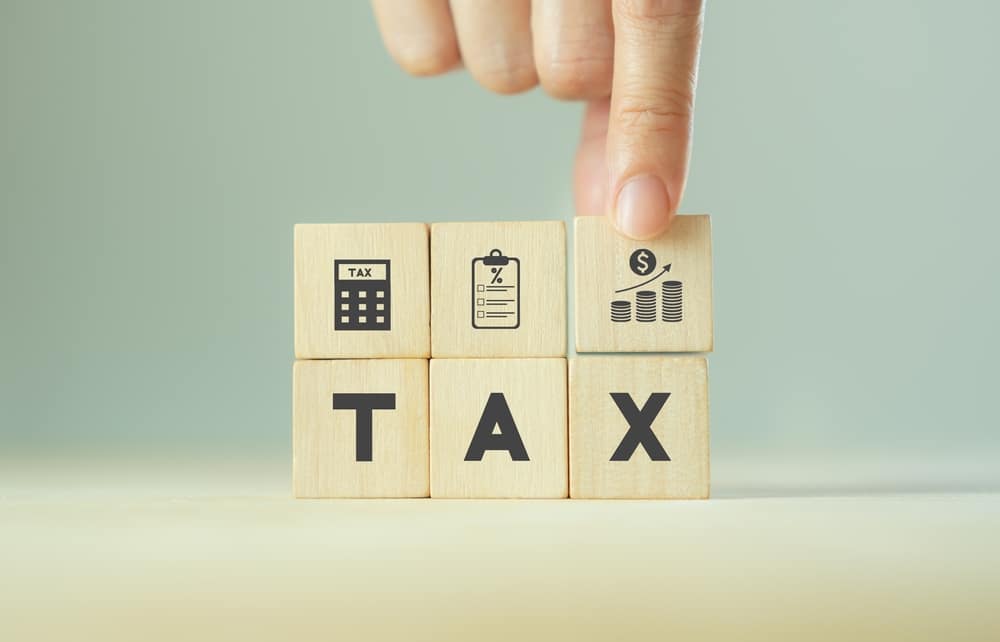As a business owner, one of the key decisions you need to make is how to pay yourself. The two most common options include dividends vs salary, and each has its own advantages and disadvantages. Understanding these differences can help ensure that your personal finances remain healthy while reducing your tax burden.
In this blog, we will compare salary vs dividends, how each option works, the benefits, and the circumstances in which you should choose one option over the other.

Paying Yourself a Salary
To compensate yourself for your work, there are a few different options available. Primarily, you can pay yourself a salary, wages or employment income. These terms are often used interchangeably, and we will explore how it works in detail.
How Salary Works on the Corporate Level
When a salary is paid, this amount is regarded as a tax-deductible expense and will reduce the total taxable income of the corporation. This can be beneficial to the company since it will reduce the overall tax liability.
In addition to the salary payment, there are other costs associated with payroll, such as Canada Pension Plan (CPP) contribution, which must be matched by the employer. However, when it comes to the Employment Insurance (EI) program, the business is not required to pay premiums for employees who also own 40% or more of the company’s voting shares Participation in this program is completely voluntary.
Depending on which province in Canada the corporation operates in, there might be additional expenses related to payrolls, such as provincial workers’ compensation premium (e.g. WSIB for Ontario, WorkSafeBC for BC, and WCB for Alberta) or employer health tax. These obligations vary for each province depending on the specific thresholds set in that province. Business owner should consider these extra costs when deciding whether to pay a salary.
How Salary Works at the Personal Level
The total amount of salary income received is classified as employment income on the personal tax return. It will be subject to taxation at the personal income tax rate during the year it was received.
You may be eligible for non-refundable tax credits in addition to the basic personal amount. Some of the federal non-refundable tax credits available to employees include a credit for CPP contributions made and the Canada employment amount. These tax credits can be used to lower your taxes when you pay personal tax.
How to Pay Yourself a Salary
If you decide to take a salary from your corporation, you must register for a payroll account first with the Canada Revenue Agency (CRA). Subsequently, the corporation must withhold source deductions from your salary for each payment made, including Canada Pension Plan (CPP) contributions and income tax. These deductions are then remitted to the Receiver General at the end of each remittance period (e.g. by the 15th of the following month). Moreover, a T4 information return must be prepared and filed for all employees who earned wages during the year. Ensuring full compliance with CRA’s payroll regulations is important to avoid any penalties associated with delinquent reporting or late payments.
Advantages of Paying a Salary or Wages
Salary offers many advantages over dividend distribution. We’ll explore them in this section.
Build RRSP Contribution Room
It’s important to consider how you are paying yourself when it comes to building RRSP contribution room. Paying yourself a salary or wages allows you to create and contribute to your Registered Retirement Savings Plan (RRSP). Every dollar put into your RRSP is eligible for a tax deduction, and any investment income earned within the account is tax deferred until withdrawal. On the other hand, if you’re solely relying on dividends, there won’t be any opportunity to build RRSP contribution room.
CPP Contribution
Earning a salary allows you to make contributions to the Canada Pension Plan (CPP), which in turn will enable you to build up a retirement income. Although it comes with an immediate cost in terms of deductions from the current paycheque and related expenses for the employer, the corporation gets a tax deduction on the employer’s portion of the CPP.
It’s important to note that when it comes to CPP, the amount you contribute today is taken into account when calculating your benefits upon retirement. This means that it may be worthwhile for you to consider contributing to the CPP in order to maximize your future retirement income.
Avoid Unexpected Tax Bills
When you are paying yourself a salary, you can avoid unexpected or surprise tax bills come April since taxes are automatically withheld at source on each payment. This means personal income tax will already have been paid on your salary through source deductions before you even file your return. However, with dividends, personal income tax isn’t deducted from each payment which often results in a hefty tax bill when filing your personal tax return.
Unfortunately, this can be quite common for those unfamiliar with how dividend payments work. If you don’t have a habit of setting aside sufficient funds for taxes or prefer not to face a large sum of taxes owed when filing your tax return, it might be best to receive a salary instead of dividends.
Approval for Personal Loan
When you are looking to qualify for a personal loan, such as a mortgage or vehicle financing, some lenders may prefer to see stable and reliable income sources. This often means earning an employment income or salary as opposed to relying solely on dividends, which may not be looked upon as favourably by the bank or lender. Unfortunately, this crucial factor can be overlooked if you focus primarily on minimizing taxes. Therefore, if you are in the process of buying a home within the next two years, check with your lender on the preferred method of payment, thus allowing you to plan ahead.

Paying Yourself in Dividends
The second option is to pay yourself dividends. We will explore how it works in detail and how it contrasts with salary payment.
How Dividend Works on the Corporate Level
Dividends are paid from the corporation’s net income to its shareholders and are not considered tax-deductible expenses for the business. This is because dividends are given out from after-tax retained earnings, meaning that they have already been subject to tax within the corporation itself. Corporate solvency tests must be used to provide guidance on whether dividends can be paid and how much dividends can be paid out. In addition, the TOSI rules introduced in 2018 must be considered when dividends are being paid to avoid adverse tax consequences.
In Canada, both eligible and non-eligible dividends can be paid. Eligible dividends come from Canadian Controlled Private Corporations (CCPCs), which are taxed according to the general corporate tax rate. In contrast, non-eligible dividends come from CCPCs that are subject to the small business corporate tax rate.
How Dividend Works at the Personal Level
An individual may be required to pay tax instalments on a quarterly basis if their tax payable exceeds $3,000 in the current year or either of the two preceding years. This requirement is especially relevant for individuals who primarily receive dividend payments, as dividend income is considered investment income and not subject to withholding tax.
When calculating taxable income to be reported on an individual’s tax return, dividend payments are ‘grossed up’ by an additional 15% or 38%, depending on whether it’s an eligible or non-eligible dividend. For example, where an individual receives a dividend payment of $10,000, they will need to declare $11,500 or $13,800 in taxable income on their tax return, depending on the type of dividend they receive. The value of this gross-up means that the amount of taxable dividends can significantly impact an individual’s eligibility for certain income-tested benefits and tax credits, such as GST/HST credit, Old Age Security (OAS), and Canada Child Tax Benefit.
In addition to the basic personal amount, individuals are eligible for a non-refundable dividend tax credit, which is designed to reflect corporate taxes already paid on this income prior to it being distributed. This credit can help reduce the overall amount of tax payable by individuals receiving dividends from the corporation.
How to Pay Yourself in Dividends
Paying dividends to shareholders of a company is relatively straightforward. The business will declare the amount of dividends to be distributed, then transfer funds from the corporate account into each shareholder’s personal account. You can take money out of the corporate account as needed and record it as dividends for total yearly distribution.
The company must then file a T5 information return for those shareholders who received dividends. Special attention should be given to the allocation of income among different shareholders that own the same class of shares, as it can be difficult to determine how much each business owner should receive. For example, if your corporation wants to distribute $50,000 in dividend payments to the owners of common shares, it must do so based on each holder’s percentage of ownership.
Advantages of Paying in Dividends
There are many benefits paying dividends has over paying a salary. We’ll dive into these advantages in greater detail.
Lower Cost Alternative
When it comes to reducing the costs associated with paying salaries and wages, many business owners are turning to dividends as an alternative. Paying dividends instead of a salary can help to reduce corporate costs because you are not required to pay the employer’s portion of the Canada Pension Plan (CPP). The maximum employer CPP contribution for each employee is $3,499.80, which is calculated at 5.7% of up to $64,900 pensionable earnings in excess of the $3,500 annual basic exemption.
Also, employers may be subject to additional employer health tax in some provinces, such as Ontario, British Columbia, and Manitoba. This particular form of tax is determined by how much total salary (or gross payroll) the employer pays out to their employees in a given calendar year. Fortunately, these levies do not apply to dividend income, meaning that businesses are able to avoid or minimize their employer health tax expenses by choosing to pay the owners in dividends instead of salaries.
Less Administrative Burden
If you are the sole owner of a corporation, it is relatively straightforward to distribute dividends to yourself for your own use. This process is much simpler than paying out wages or salaries, which involves payroll registration with the Canada Revenue Agency, calculating source deductions on each payment, and remitting payroll deductions based on the frequency of the remitting period. To distribute dividends, all that needs to be done is to declare an amount and transfer it from your company bank account to your personal bank account.
Although the T5 information return still needs to be filed once a year to report the total dividends paid to each shareholder, there is less administrative burden by paying out a dividend.
Reduced Risk of Late Remittance Penalty
By choosing to pay dividends instead of salary, there is a reduced risk of penalty for late remittances. This is because you are not required to remit source deductions on dividends, but for salary, you must make payroll remittances consistently throughout the year based on the required remitting period (e.g. once a month by the 15th of each month). Late or missed payments can incur a penalty of up to 10% on the remittance amount. If you are concerned about being able to make consistent payroll remittances, dividends could be the right option.

Which Option Pays Less Tax?
When assessing whether salary or dividends pays less tax, the answer is not always clear-cut. That’s because of integration, which is a concept within taxation legislation that aims to ensure that when the overall income taxes are paid, which includes both personal and corporate taxes, it would be relatively the same regardless of the payment form chosen.
Salaries generally reduce corporate tax, resulting in higher personal tax than dividend payments. On the other hand, dividends do not reduce corporate tax but create lower personal taxes than salary payments of the same amount.
Integration works to bridge this discrepancy by taking into consideration a variety of factors, such as the level of corporation tax rates and personal income tax rates, and individual taxpayers receive a personal tax credit for corporate taxes paid on dividend payments to ensure that the overall income tax burden remains relatively consistent when compared to salary payments. As you can see in the calculations below, integration is not perfect, and there are tax leakages depending on the amounts paid and the province you are located.
Calculating Taxes for Salary vs Dividends
To better understand how taxes are calculated for salary vs dividends, let’s look at the scenario for payments of $80,000 and $200,000 in Ontario, British Columbia, and Alberta. We will calculate the overall amount of taxes (both corporate and personal) that would be paid if salaries were used, and compare this with the amount of taxes that would be paid if dividends were used. A similar result applies to other provinces and territories.
Total Costs of Salary vs Dividends in Ontario
The following calculations compare the total costs of paying $80,000 and $200,000 in Ontario.
Salary of $80,000 in Ontario:
| Corporate tax savings | |
| Salary paid | 80,000.00 |
| Employer’s portion of CPP | 3,499.80 |
| 83,499.80 | |
| Small business corporate tax rate | 12.2% |
| Total corporate tax savings | (10,186.98) |
| Personal tax costs | |
| Federal personal tax | 10,736.12 |
| Ontario personal tax | 5,416.49 |
| Total personal tax costs | 16,152.61 |
| CPP costs | |
| Employee’s portion of CPP | 3,499.80 |
| Employer’s portion of CPP | 3,499.80 |
| Total CPP costs | 6,999.60 |
| Total costs of salary | 12,965.23 |
Dividends of $80,000 in Ontario:
| Corporate tax savings | |
| Dividends paid | 80,000.00 |
| Total corporate tax savings | 0.00 |
| Personal tax costs | |
| Federal personal tax | 5,631.78 |
| Ontario personal tax | 4,156.53 |
| Total personal tax costs | 9,788.31 |
| CPP costs | |
| Employee’s portion of CPP | 0.00 |
| Employer’s portion of CPP | 0.00 |
| Total CPP costs | 0.00 |
| Total costs of dividends | 9,788.31 |
Salary of $200,000 in Ontario:
| Corporate tax savings | |
| Salary paid | 200,000.00 |
| Employer’s portion of CPP | 3,499.80 |
| 203,499.80 | |
| Small business corporate tax rate | 12.2% |
| Total corporate tax savings | (24,826.98) |
| Personal tax costs | |
| Federal personal tax | 42,274.03 |
| Ontario personal tax | 25,991.59 |
| Total personal tax costs | 68,265.62 |
| CPP costs | |
| Employee’s portion of CPP | 3,499.80 |
| Employer’s portion of CPP | 3,499.80 |
| Total CPP costs | 6,999.60 |
| Total costs of salary | 50,438.24 |
Dividends of $200,000 in Ontario:
| Corporate tax savings | |
| Dividends paid | 200,000.00 |
| Total corporate tax savings | 0.00 |
| Personal tax costs | |
| Federal personal tax | 31,403.46 |
| Ontario personal tax | 25,446.78 |
| Total personal tax costs | 56,850.24 |
| CPP costs | |
| Employee’s portion of CPP | 0.00 |
| Employer’s portion of CPP | 0.00 |
| Total CPP costs | 0.00 |
| Total costs of dividends | 56,850.24 |
Based on the calculations above for Ontario, dividend payment is more cost-effective than salary when the amount is $80,000. However, when the payment increases to $200,000, salary becomes a cheaper alternative. It is important to note these calculations are generic and may be oversimplified. Other factors could potentially alter the final result and must be taken into consideration.
Total Costs of Salary vs Dividends in British Columbia
The following calculations compare the total costs of paying $80,000 and $200,000 in British Columbia (BC).
Salary of $80,000 in British Columbia:
| Corporate tax savings | |
| Salary paid | 80,000.00 |
| Employer’s portion of CPP | 3,499.80 |
| 83,499.80 | |
| Small business corporate tax rate | 11% |
| Total corporate tax savings | (9,184.98) |
| Personal tax costs | |
| Federal personal tax | 10,736.12 |
| British Columbia personal tax | 4,261.82 |
| Total personal tax costs | 14,997.94 |
| CPP costs | |
| Employee’s portion of CPP | 3,499.80 |
| Employer’s portion of CPP | 3,499.80 |
| Total CPP costs | 6,999.60 |
| Total costs of salary | 12,812.56 |
Dividends of $80,000 in British Columbia:
| Corporate tax savings | |
| Dividends paid | 80,000.00 |
| Total corporate tax savings | 0.00 |
| Personal tax costs | |
| Federal personal tax | 5,631.78 |
| British Columbia personal tax | 4,156.53 |
| Total personal tax costs | 9,788.31 |
| CPP costs | |
| Employee’s portion of CPP | 0.00 |
| Employer’s portion of CPP | 0.00 |
| Total CPP costs | 0.00 |
| Total costs of dividends | 9,788.31 |
Salary of $200,000 in British Columbia:
| Corporate tax savings | |
| Salary paid | 200,000.00 |
| Employer’s portion of CPP | 3,499.80 |
| 203,499.80 | |
| Small business corporate tax rate | 11% |
| Total corporate tax savings | (22,384.98) |
| Personal tax costs | |
| Federal personal tax | 42,274.03 |
| British Columbia personal tax | 21,163.90 |
| Total personal tax costs | 63,437.93 |
| CPP costs | |
| Employee’s portion of CPP | 3,499.80 |
| Employer’s portion of CPP | 3,499.80 |
| Total CPP costs | 6,999.60 |
| Total costs of salary | 48,052.55 |
Dividends of $200,000 in British Columbia:
| Corporate tax savings | |
| Dividends paid | 200,000.00 |
| Total corporate tax savings | 0.00 |
| Personal tax costs | |
| Federal personal tax | 31,403.46 |
| British Columbia personal tax | 22,034.69 |
| Total personal tax costs | 53,438.15 |
| CPP costs | |
| Employee’s portion of CPP | 0.00 |
| Employer’s portion of CPP | 0.00 |
| Total CPP costs | 0.00 |
| Total costs of dividends | 53,438.15 |
When considering payment options for a business operating in British Columbia, it is important to understand the tax implications of both salary and dividends. Generally, at a lower payment of $80,000, dividend payments become the more cost-effective option as fewer taxes are incurred; however, salary becomes the cheaper option when payment increases to $200,000. It is critical to remember that these calculations are generic and that other factors should be considered when making a final decision.
Total Costs of Salary vs Dividends in Alberta
The following calculations compare the total costs of paying $80,000 and $200,000 in Alberta.
Salary of $80,000 in Alberta:
| Corporate tax savings | |
| Salary paid | 80,000.00 |
| Employer’s portion of CPP | 3,499.80 |
| 83,499.80 | |
| Small business corporate tax rate | 11% |
| Total corporate tax savings | (9,184.98) |
| Personal tax costs | |
| Federal personal tax | 10,736.12 |
| Alberta personal tax | 5,668.62 |
| Total personal tax costs | 16,404.74 |
| CPP costs | |
| Employee’s portion of CPP | 3,499.80 |
| Employer’s portion of CPP | 3,499.80 |
| Total CPP costs | 6,999.60 |
| Total costs of salary | 14,219.36 |
Dividends of $80,000 in Alberta:
| Corporate tax savings | |
| Dividends paid | 80,000.00 |
| Total corporate tax savings | 0.00 |
| Personal tax costs | |
| Federal personal tax | 5,631.78 |
| Alberta personal tax | 5,213.00 |
| Total personal tax costs | 10,844.78 |
| CPP costs | |
| Employee’s portion of CPP | 0.00 |
| Employer’s portion of CPP | 0.00 |
| Total CPP costs | 0.00 |
| Total costs of dividends | 10,844.78 |
Salary of $200,000 in Alberta:
| Corporate tax savings | |
| Salary paid | 200,000.00 |
| Employer’s portion of CPP | 3,499.80 |
| 203,499.80 | |
| Small business corporate tax rate | 11% |
| Total corporate tax savings | (22,384.98) |
| Personal tax costs | |
| Federal personal tax | 42,274.03 |
| Alberta personal tax | 19,359.19 |
| Total personal tax costs | 61,633.22 |
| CPP costs | |
| Employee’s portion of CPP | 3,499.80 |
| Employer’s portion of CPP | 3,499.80 |
| Total CPP costs | 6,999.60 |
| Total costs of salary | 46,247.84 |
Dividends of $200,000 in Alberta:
| Corporate tax savings | |
| Dividends paid | 200,000.00 |
| Total corporate tax savings | 0.00 |
| Personal tax costs | |
| Federal personal tax | 31,403.46 |
| Alberta personal tax | 18,761.17 |
| Total personal tax costs | 50,164.63 |
| CPP costs | |
| Employee’s portion of CPP | 0.00 |
| Employer’s portion of CPP | 0.00 |
| Total CPP costs | 0.00 |
| Total costs of dividends | 50,164.63 |
When examining the most cost-effective option for Alberta businesses to pay salaries or dividends, calculations have shown that a payment of $80,000 is more cost-effective when using dividends. However, if the amount increases to $200,000, paying a salary becomes the more economical option. It is important to note that the calculations are generic and other variables may need to be taken into consideration.
Other Tax-Free Forms of Payment
Depending on your company’s circumstances, other tax-free forms of payment may be considered before paying yourself a salary or a dividend.
If you have previously loaned funds to the company to finance its operation, it may be wise to have the corporation repay all or part of this loan. This is especially true if your company is profitable and has excess cash flow. Reimbursement of shareholder loan can take the form of a tax-free distribution, which is similar in nature to a return of capital. The repayment of your shareholder loan is tax-free and will not trigger any personal tax liability.
In addition, capital dividends may be available if the corporation has previously realized capital gains on the disposal of assets. It provides shareholders with an additional avenue of tax-free distribution. To find out if you can pay tax-free capital dividend, review the company’s capital dividend account (CDA).
Conclusion
When deciding between salary vs dividends, there is no clear-cut answer. It should be based on a variety of qualitative factors discussed above and the total tax costs, while taking into account your personal situation and the current state of your business. To make an informed decision that best suits your needs, it is essential to evaluate all the relevant factors in totality. If you have questions about dividends, salary, or other forms of payment, contact our corporate tax accountant and we’ll be happy to advise.
